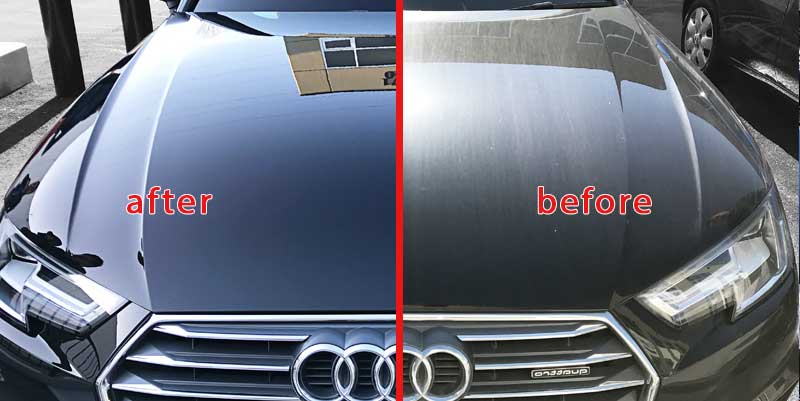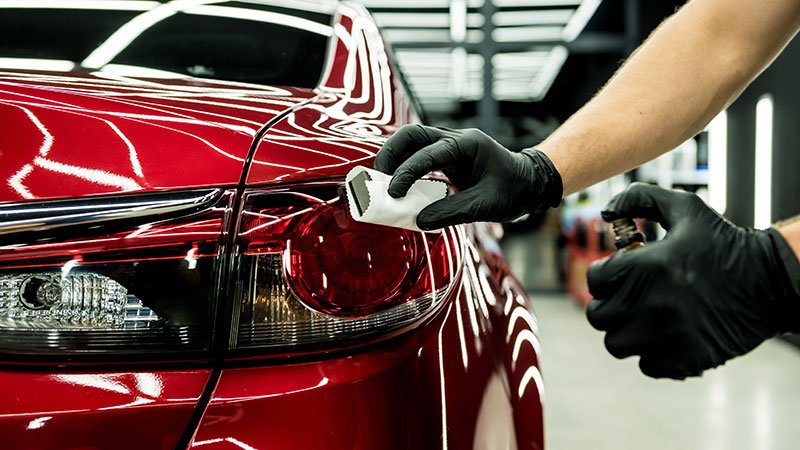Transform Your Vehicle with Professional Ceramic Coatings San Jose
Transform Your Vehicle with Professional Ceramic Coatings San Jose
Blog Article
Unveiling the Scientific Research Behind Ceramic Coatings: How Does It Work and Why Is It Superior to Standard Alternatives?
Ceramic coatings have been gaining popularity in numerous markets for their outstanding performance and toughness. The science behind these finishes surpasses plain surface area protection, delving right into the complex chemistry that makes them stand out from traditional options (ceramic coatings san jose). Understanding just how ceramic finishes work and why they exceed traditional options is vital for those seeking to enhance the durability and strength of their products. What precisely establishes ceramic coverings apart, and exactly how do they attain such exceptional results?
The Chemistry of Ceramic Coatings
In understanding ceramic finishings, delving right into the elaborate chemistry behind their make-up is essential for realizing their performance and resilience. Ceramic layers are mainly composed of silicon dioxide (SiO2), which develops a protective and strong layer when related to various surfaces. This chemical structure gives outstanding resistance to heat, chemicals, and deterioration, making ceramic finishings very searched for for a variety of applications.
The chemistry behind ceramic layers involves the development of covalent bonds between silicon and oxygen atoms, developing a stiff network that improves the finish's sturdiness and resilience. Furthermore, the presence of other elements such as titanium, light weight aluminum, and zirconium additional enhances the covering's properties, providing boosted hardness and attachment to surface areas.
Recognizing the chemical composition of ceramic finishes allows for the personalization of formulations to fit specific demands, whether it be for automotive, commercial, or household objectives. By taking advantage of the power of chemistry, ceramic finishes remain to lead the way for exceptional protection and performance in different markets.
Advantages of Ceramic Coatings

An additional considerable advantage of ceramic coverings is their hydrophobic nature. This property creates water to grain up and roll off the covered surface, lugging dirt and contaminants with it. As a result, ceramic finishes make cleaning and keeping surface areas a lot easier and less taxing. Ceramic coverings offer enhanced color and gloss deepness, giving surfaces a vibrant and shiny appearance. Overall, the wide range of advantages used by ceramic coverings make them an exceptional alternative compared to typical layer methods.
Just How Ceramic Coatings Bond
Ceramic coatings bond to surface areas via a procedure that entails molecular bond and chemical interactions. When a ceramic finishing is applied Get More Information to a surface, it creates a solid bond by chemically sticking to the surface at a molecular level.
In addition, the chemical communications in between the ceramic finishing and the surface even more enhance the bond. ceramic coatings san jose. These communications permit the ceramic finish to produce a seamless and continuous layer externally, offering excellent defense and longevity. Unlike standard finishings that may rest on the surface without totally bonding, ceramic finishes produce an irreversible bond that is immune to chemicals, UV rays, and severe ecological conditions

Fundamentally, the bonding system of ceramic coverings ensures a durable and efficient protective layer that surpasses traditional layer choices. This exceptional bond adds to the longevity, scrape resistance, and longevity of ceramic layers, making them a favored choice for different applications.
Sturdiness of Ceramic Coatings
The remarkable longevity of ceramic finishes stems from their durable molecular adhesion and chemical communications with surface areas, guaranteeing a resilient safety layer that surpasses typical finishing alternatives. Once used, ceramic finishes form a solid bond with the substratum, producing a durable barrier against various ecological stress factors such as UV radiation, chemicals, and abrasions. This bond is so protected that it can hold up against the rigors of everyday usage without wearing away or degrading swiftly.
Unlike typical finishes that might weaken over time, ceramic finishings keep their honesty for an extended period, supplying durable defense for the underlying surface. The strong molecular framework of ceramic finishings resists breaking, fading, and peeling, guaranteeing that the surface area stays shielded and visually pleasing for years ahead. This resilience not just lowers the need for regular reapplications however also conserves time and cash over time. Generally, great post to read the outstanding toughness of ceramic coverings makes them a premium option for protecting a wide variety of surfaces in different applications.
Ceramic Coatings Vs. Traditional Alternatives
In comparison to traditional layer techniques, ceramic finishes offer a distinctive mix of toughness and recommended you read safety capacities that establish them apart in various surface protection applications. Standard alternatives such as wax or sealers provide a short-term layer of defense that can wear off rapidly, calling for constant reapplication. On the various other hand, ceramic finishings develop a solid bond with the surface area, creating a semi-permanent or irreversible barrier that is highly immune to abrasion, chemicals, UV rays, and extreme temperatures.
Furthermore, ceramic coatings provide remarkable hydrophobic residential properties contrasted to typical finishings. The hydrophobic nature of ceramic finishes triggers water to grain up and roll off the surface, carrying dirt and impurities with it. This self-cleaning impact assists to keep the surface's cleanliness and gloss for extended periods, decreasing the need for constant maintenance.
Additionally, ceramic coatings have a thicker layer contrasted to conventional options, giving improved scrape resistance and protection against small effects. This toughness guarantees long-lasting efficiency and helps protect the aesthetic allure of the treated surface area for an extended duration.
Conclusion
Finally, the science behind ceramic coatings hinges on their chemical composition and bonding residential or commercial properties, making them exceptional to standard options. The advantages of ceramic coverings consist of increased toughness and protection for surfaces. By recognizing how ceramic layers work and their advantages over typical options, one can make educated choices when considering finish options for different applications.
Unlike typical finishings that might rest on the surface without completely bonding, ceramic layers develop a permanent bond that is resistant to chemicals, UV rays, and rough environmental conditions.
The exceptional long life of ceramic finishes stems from their robust molecular bond and chemical communications with surface areas, ensuring a resilient protective layer that exceeds standard layer alternatives.Unlike traditional finishings that might break down over time, ceramic layers keep their honesty for an extensive duration, providing long-lasting protection for the underlying surface.In contrast to conventional coating methods, ceramic coverings offer a distinctive blend of resilience and protective capabilities that establish them apart in numerous surface area security applications. By recognizing exactly how ceramic finishings work and their advantages over traditional alternatives, one can make enlightened choices when taking into consideration layer alternatives for different applications.
Report this page